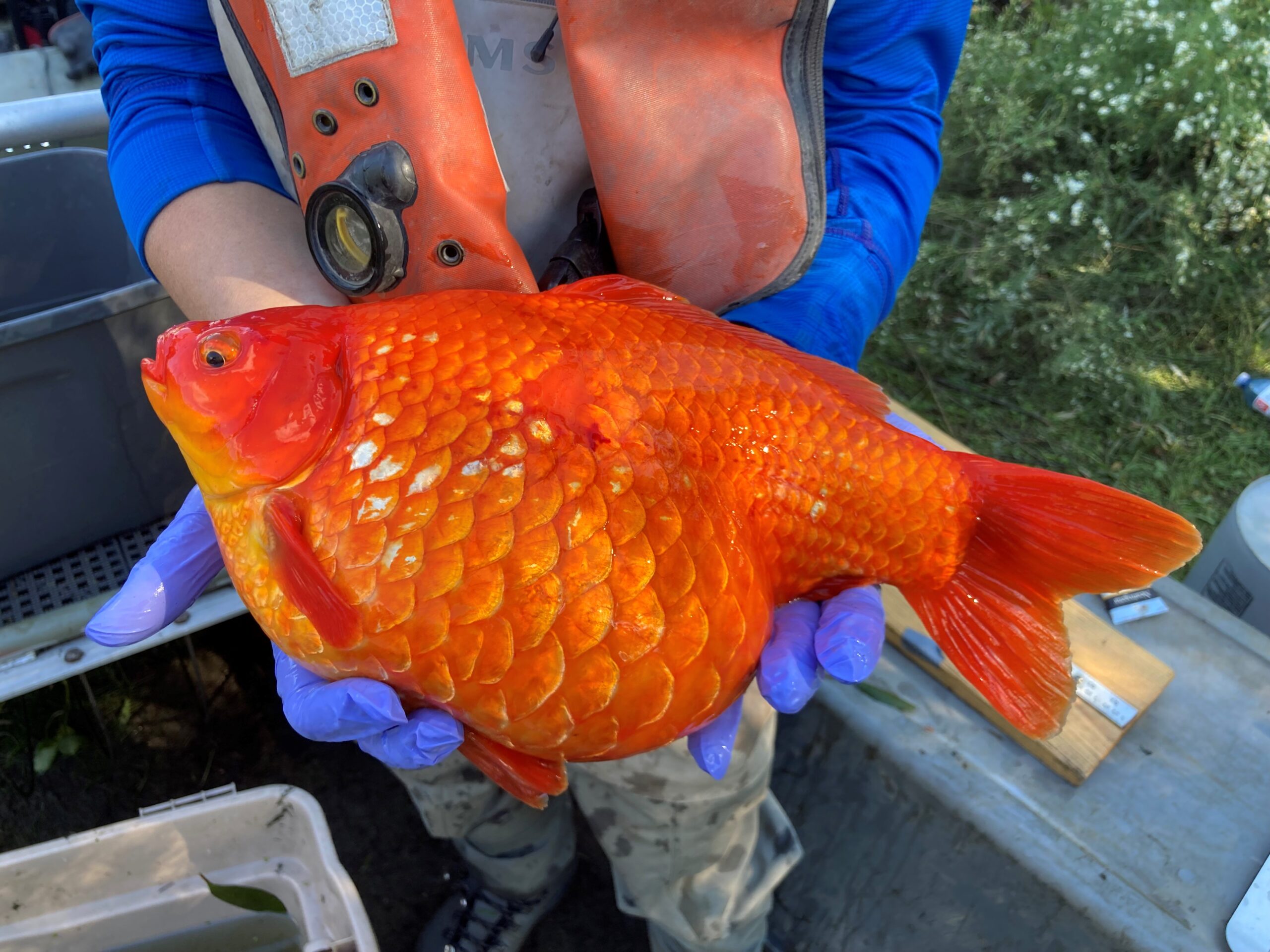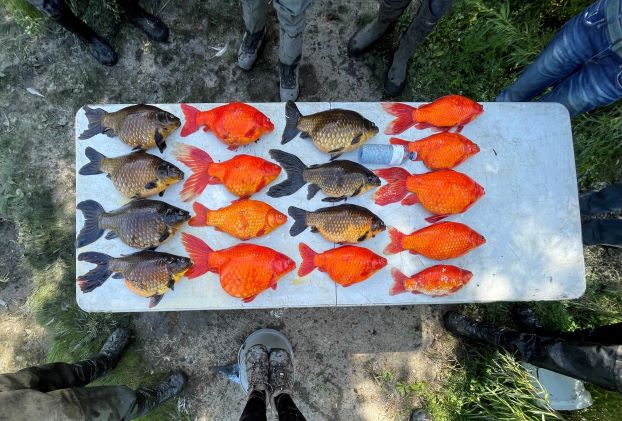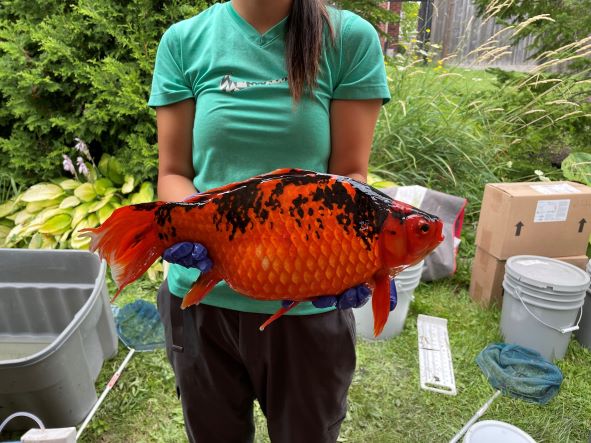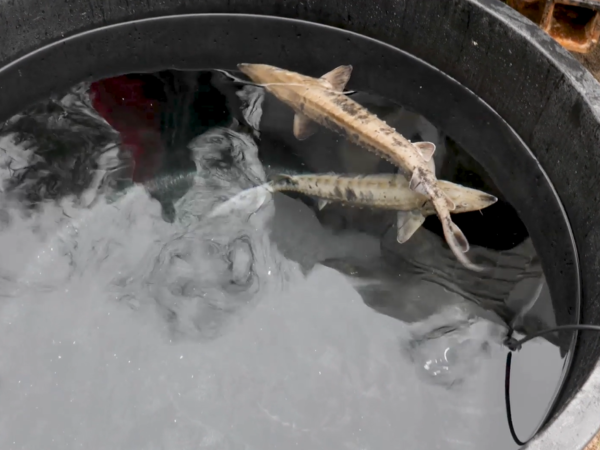
A tiny goldfish might look cute in a fishbowl on your shelf, but if released into the wild it can grow to a terrifying size and become a menace to the ecosystem. They eat pretty much anything and everything, root up plants causing the water to become cloudy and dark, and reproduce and grow so quickly that almost no predators can stop them.
“None of that is ecologically or aesthetically desirable,” says Hugh MacIssac, who studies aquatic invasive species at the University of Windsor.
Feral goldfish have been invading much of North America, including the Great Lakes, for decades and recently their numbers seem to be rising rapidly. The reason for the uptick is not clear, but it could be because invasive carp are being better controlled, and the goldfish are taking their place. New designs for stormwater ponds, where people often dump unwanted fish, that allow the ponds to overflow into nearby waterways could also be boosting the numbers.

Fish from stormwater ponds feeding into Hamilton Harbour. (Photo courtesy of Fisheries and Oceans Canada)
While goldfish may seem small and vulnerable, they are actually very good invaders. They are hardy and adaptable, able to survive and thrive under a wide range of temperature and oxygen conditions that many native species can’t handle.
But little is known about how they live in the lakes, making it difficult to come up with effective management strategies. So Christine Boston, a biologist at Fisheries and Oceans Canada’s Great Lakes Laboratory for Fisheries and Aquatic Sciences in Burlington, Ontario, and her colleagues set out to learn more about the fish that have made their home in Hamilton Harbour on Lake Ontario.
They captured 19 large goldfish – each at least a foot long and weighing up to 3 pounds – and implanted them with acoustic tags that could be tracked by a sensor array originally installed to monitor stocked walleye. Over the course of two years they followed the fish, noting where they liked to spend their time. Interestingly, some very clear, and unexpected, patterns emerged.
“They overwintered in the same areas each year, and returned to the same spawning habitat each spring,” says Boston – except for one “crazy” individual who left the harbour and spent several months out in the lake one winter.

Fish from stormwater ponds feeding into Hamilton Harbour. (Photo courtesy of Fisheries and Oceans Canada)
They also found that the fish would congregate in certain areas before they began moving to their spawning grounds much earlier in the year, and in colder water, than expected.
MacIssac says that offers an opportunity to control the invaders. “If we can geolocate where they are, we can use selective fishing to eliminate or reduce them,” he says. The “Judas fish” technique is one possibility, where a few tagged fish indicate where larger groups are aggregating so that they can be targeted.
That technique has been successful in tackling invasive carp, which are related to goldfish, elsewhere in the United States so Boston is hopeful it could work on goldfish in the Great Lakes too.
“We’ve seen significant drops in invasive carp populations, so we know control works,” says Boston. “If we can get our hands on them, we can make a real dent in their population.”
But control must start with stopping new fish from entering the wild – and that means keeping them in the fishbowl where they belong.
“Biologists must fight any perception that goldfish are harmless species when released into the wild,” says Anthony Ricciardi, who studies invasive species at McGill University in Montreal. Tossing an unwanted pet into a pond or flushing it down the toilet can have serious consequences for our lakes and wetlands.
Catch more news at Great Lakes Now:
Some banned pesticides fade from Great Lakes air, while others persist
Lake sturgeon added to endangered list, but things are looking up
Featured image: Fish from stormwater ponds feeding into Hamilton Harbour. (Photo courtesy of Fisheries and Oceans Canada)




